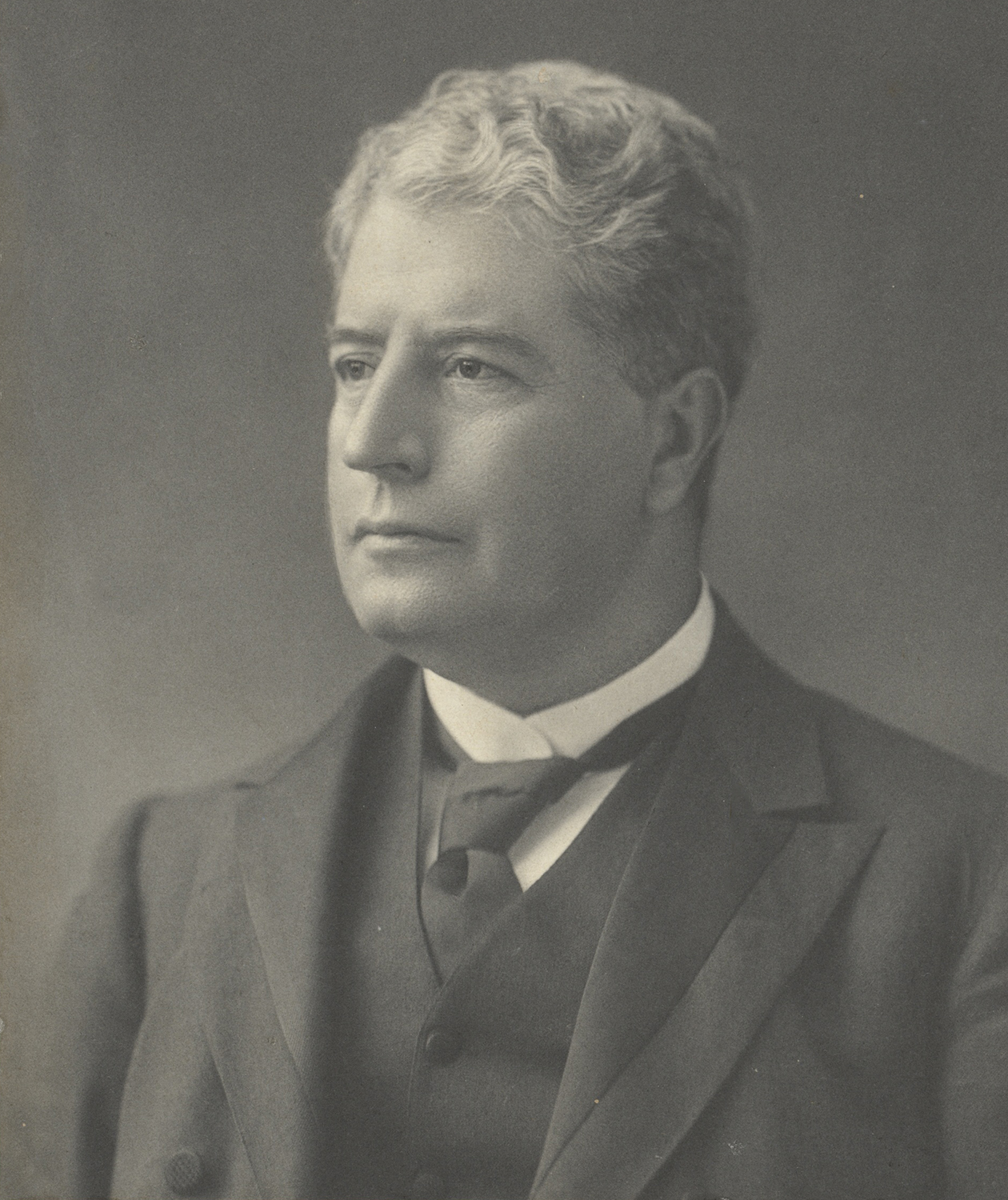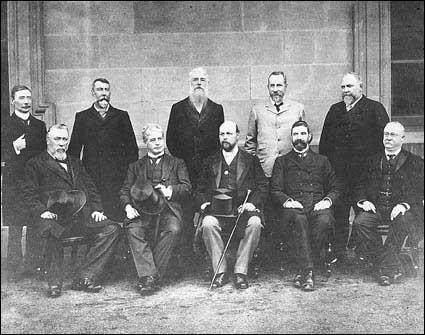Barton, Sir Edmund (1849-1920), was the first prime minister of Australia. He held the office from 1901 to 1903. Barton probably is best known as the leader of the federation movement, the effort to unite the British colonies in Australia to form an independent nation in 1901. He helped write the Constitution of Australia and also served as one of the original judges on Australia’s High Court, created in 1903. While Barton was prime minister, Parliament passed many laws to set up the workings of the Australian federal government. His administration also developed important legislation dealing with immigration and voting rights.

Barton was known for his tact, perception, keen intellect, and easygoing personality. While a member of Parliament, he spent much time at the Athenaeum Club, a private gentlemen’s club in Sydney, in the company of artists, intellectuals, politicians, and professionals of his day. Barton also possessed a marked appreciation for literature, music, and the theater, and for good food and fine wine. The nickname “Toby Tosspot,” given to Barton by the press, referred to his fondness for drink.
Early life and family
Edmund Barton was born in Glebe, a part of Sydney, on Jan. 18, 1849. He was the youngest of the nine surviving children born to William and Mary Louisa Barton. William Barton worked as an accountant, financial agent, and sharebroker. Edmund’s mother ran a girls’ school during the 1860’s. As a boy, Barton acquired the nickname Toby. While attending Sydney Grammar School, he began a lifelong friendship with Richard Edward O’Connor, who, like Barton, would become an Australian statesman and judge.
Barton attended the University of Sydney, where he earned a bachelor’s degree in classics in 1868 and a master’s degree in 1870. He played cricket for the University Cricket Club in 1870 and 1871. From 1868 to 1871, Barton worked for two lawyers—Henry Bradley and, later, G. C. Davies. In December 1871, he became a barrister, a lawyer who pleads cases in the higher courts in the Australian justice system.
In 1877, Barton married Jane Mason Ross (1851-1938). The couple settled in Sydney and eventually had six children: Edmund Alfred (born 1879), who became a judge; Wilfrid (born 1880); Jean Alice (born 1882), who married David Maughan, a Sydney barrister, and later became Lady Maughan; Arnold Hubert (born 1884); Oswald (born 1888), who became a physician; and Leila Stephanie (born 1892). Barton acted as crown prosecutor for short periods in 1875 and 1878. A crown prosecutor represents the Crown—that is, the government of the United Kingdom in its legal capacity—in criminal proceedings.
As a young man in his 20’s, Barton was an avid fisherman and cricket player, traveling around the country to participate in and organize cricket matches. During this period, he also developed his skill for debating at the Sydney Mechanics’ School of Arts, which provided adult education to workers.
Political career
Barton’s career in politics was not immediately successful. He ran twice for a seat in the New South Wales Legislative Assembly, in 1876 and in 1877, and lost. The Legislative Assembly is the lower house of the Parliament of New South Wales. In 1879, he finally won a seat in the Assembly, where he served until 1887, then again from 1891 to 1894, and from 1898 to 1900. In 1883, Barton became the Legislative Assembly’s youngest speaker (presiding officer), a position he held until 1887. From 1898 to 1899, he was leader of the opposition in the Assembly. From 1891 to 1893, he served as the New South Wales attorney general. Barton served as a member of the Legislative Council, the upper house of the Parliament of New South Wales, from 1887 to 1891 and from 1897 to 1898.
Federation leader.
While a member of the New South Wales Parliament, Barton became an important leader in the movement to unite the Australian colonies in a federation. In 1891, at the National Australasian Convention, Barton helped draw up a draft of a federal constitution. However, objections from the government of New South Wales and a severe economic crisis prevented the colonies from adopting the draft constitution.
Beginning in 1893, Barton traveled widely in New South Wales, attending rallies and making speeches to explain to the public the advantages of federation. In 1897 and 1898, he represented New South Wales at the Australasian Federal Convention. There, he served as chairman of a committee set up to redraft the constitution. In 1899, after some amendments had been made, the document finally was accepted by a majority of the people voting in a referendum in the eastern colonies. The people of Western Australia voted on and accepted the document in 1900.
In March 1900, Barton led a delegation to London to present the Constitution to the British Parliament. After some debate about judicial procedures, Parliament approved the Constitution in July. The British agreed that all constitutional issues would be decided by an Australian High Court rather than by the British Privy Council, which had been the highest court of appeal in the Australian justice system.
In late 1900, Lord Hopetoun, who had been named to the position of governor general, the representative of the British monarch in Australia, selected William Lyne, the premier of New South Wales, to be prime minister. But Australia’s leading politicians did not support Lyne, and Lyne failed to form a government. Hopetoun then invited Barton to form a government ministry, the members of which Barton announced in late December. The Commonwealth of Australia came into being on Jan. 1, 1901.

Prime minister.
Once in office, Barton’s government scheduled federal legislative elections for March 29 and 30. Barton ran for a seat in the federal Parliament as a member of the Protectionist Party, which favored protective tariffs on Australian imports. During his campaign, Barton supported voting rights for women, old-age pensions, limits on immigration, and moderate protection of Australian industries. The Protectionist Party won the most seats in the House of Representatives, the lower house of the Parliament. Barton, the party’s leader, then formed a government with the support of the Labor Party and remained prime minister. Barton also served as minister of external affairs in the new government.
During its first session, Parliament passed legislation to establish the workings of the Commonwealth, in accordance with the Constitution. Also in 1901, Parliament passed legislation known as the “White Australia” policy. These laws resulted in the deportation of thousands of Pacific Islanders working on sugar plantations in Queensland and limited immigration from non-European countries. The laws sought to protect white Australians’ jobs from Asian laborers, who worked for lower wages.
In 1902, the government extended voting rights to women, but it excluded most Australians of non-European descent from voting. The same year, Barton traveled to the United Kingdom for the coronation of King Edward VII. While there, he was made a Knight Grand Cross of the Order of St. Michael and St. George. In England, Barton also negotiated an agreement by which Australia would support a squadron of Britain’s Royal Navy at Sydney, and local sailors would be trained as part of the Royal Naval Reserve. As a result, Australia would not have to create and pay for its own navy right away.

High Court judge.
In 1903, Barton’s government established the High Court of Australia—the court that today decides constitutional questions and serves as the nation’s ultimate court of appeal. Barton resigned as prime minister on Sept. 23, 1903, and soon was appointed as one of three judges of the High Court. His long-time friend Richard O’Connor also was appointed a High Court judge.
Barton served on the High Court for about 16 years. During that time, the court made many decisions that established the relationship between the federal government and individual state governments. In 1913, Barton served briefly as acting chief justice of the court. Barton died of heart failure on Jan. 7, 1920, while vacationing in Medlow Bath, New South Wales.
